Morocco
From Wikipedia, the free encyclopedia
For other uses, see Morocco (disambiguation).
| Kingdom of Morocco
المملكة المغربية
al-Mamlakah al-Maġribiyah ⵜⴰⴳⵍⴷⵉⵜ ⵏ ⵍⵎⴰⵖⵔⵉⴱ Tageldit n-l'Meġrib | ||||||
|---|---|---|---|---|---|---|
| ||||||
| Motto:
الله، الوطن، الملك (Arabic)
ⴰⴽⵓⵛ, ⴰⵎⵓⵔ, ⴰⴳⵍⵍⵉⴷ (Berber)Allah, Al Watan, Al Malik "God, Homeland, King" | ||||||
| Anthem: النشيد الوطني المغربي (Arabic) Cherifian Anthem | ||||||
|
Dark green: Internationally recognized territory of Morocco.
Lighter striped green: Western Sahara, a non-decolonized territory claimed and mostly controlled by Moroccoas its Southern Provinces. | ||||||
| Capital | Rabat 34°02′N 6°51′W | |||||
| Largest city | Casablanca 33°32′N 7°35′E | |||||
| Official languages | ||||||
| Recognised national languages | French[Notes 1] | |||||
| Native languages[a] | ||||||
| Ethnic groups (2014[1]) |
| |||||
| Religion | Sunni Islam[c] (official),Shia Islam (minority),Judaism (minority),Christianity (minority),Baha'i (minority)[2] | |||||
| Demonym | Moroccan | |||||
| Government | Unitary parliamentary constitutional monarchy[3] | |||||
| • | King | Mohammed VI | ||||
| • | Prime Minister | Abdelilah Benkirane | ||||
| Legislature | Parliament | |||||
| • | Upper house | House of Councillors | ||||
| • | Lower house | House of Representatives | ||||
| Moroccan statehood | ||||||
| • | Idrisid Dynasty (first) | 789 | ||||
| • | Alaouite dynasty (current) | 1666 | ||||
| • | Protectorate established | 30 March 1912 | ||||
| • | Protectorate abolished | 7 April 1956 | ||||
| Area | ||||||
| • | Total | 710,850 km2 or 446,550 km2[d] (40th or 58th) 274,460 sq mi or 172,413 [d] sq mi | ||||
| • | Water (%) | 0.056 (250 km2) | ||||
| Population | ||||||
| • | 1 September 2014 census | 33,848,242[4] | ||||
| • | Density | 73.1/km2 189.3/sq mi | ||||
| GDP (PPP) | 2015 estimate | |||||
| • | Total | $274.53 billion[5] | ||||
| • | Per capita | $8,194[6] | ||||
| GDP (nominal) | 2015 estimate | |||||
| • | Total | $103.08 billion[7] | ||||
| • | Per capita | $3,077[8] | ||||
| Gini (2007) | 40.9[9] medium | |||||
| HDI (2014) | medium · 126th | |||||
| Currency | Moroccan dirham (MAD) | |||||
| Time zone | WET (UTC+0) | |||||
| • | Summer (DST) | WEST (UTC+1) | ||||
| Drives on the | right | |||||
| Calling code | +212 | |||||
| ISO 3166 code | MA | |||||
| Internet TLD | .ma | |||||
| a. | ^ See Languages of Morocco. | |||||
| b. | ^ Primarily Darija and Hassaniya. | |||||
| c. | ^ Official religion. | |||||
| d. | ^ The area 446,550 km2 (172,410 sq mi) excludes all disputed territories, while 710,850 km2 (274,460 sq mi) includes the Moroccan-administered parts of Western Sahara (claimed as the Sahrawi Arab Democratic Republic by the Polisario Front). | |||||
Morocco ( i/məˈrɒkoʊ/; Arabic: المغرب al-Maġrib; Berber: ⵍⵎⴰⵖⵔⵉⴱ[11] l'Meġrib; French: Maroc[Notes 1]), officially the Kingdom of Morocco,[1] is a country in the Maghreb region of North Africa. Geographically, Morocco is characterized by a rugged mountainous interior and large portions of desert. It is one of only three countries (with Spain and France) to have both Atlantic and Mediterranean coastlines. The Arabic name al-Mamlakah al-Maghribiyah (Arabic: المملكة المغربية, meaning "The Western Kingdom") and Al-Maghrib (Arabic: المغرب, meaning "The West") are commonly used as alternate names.
i/məˈrɒkoʊ/; Arabic: المغرب al-Maġrib; Berber: ⵍⵎⴰⵖⵔⵉⴱ[11] l'Meġrib; French: Maroc[Notes 1]), officially the Kingdom of Morocco,[1] is a country in the Maghreb region of North Africa. Geographically, Morocco is characterized by a rugged mountainous interior and large portions of desert. It is one of only three countries (with Spain and France) to have both Atlantic and Mediterranean coastlines. The Arabic name al-Mamlakah al-Maghribiyah (Arabic: المملكة المغربية, meaning "The Western Kingdom") and Al-Maghrib (Arabic: المغرب, meaning "The West") are commonly used as alternate names.
Morocco has a population of over 33.8 million and an area of 446,550 km2 (172,410 sq mi). Its political capital is Rabat, although the largest city is Casablanca; other major cities include Marrakesh, Tangier, Tetouan, Salé, Fes, Agadir, Meknes, Oujda, Kenitra, and Nador. A historically prominent regional power, Morocco has a history of independence not shared by its neighbours. Its distinct culture is a blend of Arab, indigenous Berber, Sub-Saharan African, and European influences.
Morocco claims the non-self-governing territory of Western Sahara as its Southern Provinces. Morocco annexed the territory in 1975, leading to a guerrilla war with indigenous forces until a cease-fire in 1991. Peace processes have thus far failed to break the political deadlock.
Morocco is a constitutional monarchy with an elected parliament. The King of Morocco holds vast executive and legislative powers, especially over the military, foreign policy and religious affairs. Executive power is exercised by the government, while legislative power is vested in both the government and the two chambers of parliament, the Assembly of Representatives and the Assembly of Councillors. The king can issue decrees called dahirs which have the force of law. He can also dissolve the parliament after consulting the Prime Minister and the president of the Constitutional court.
Morocco's predominant religion is Islam, while the official languages are Arabic and Berber. Moroccan Arabic, referred to as Darija, and French are also widely spoken. Morocco is an influential member of the Arab League and a part of the Union for the Mediterranean. It has the sixth-largest economy in Africa.
Contents
[hide]Etymology
The full Arabic name al-Mamlakah al-Maghribiyyah (المملكة المغربية) translates to "Kingdom of the West"; although "the West" in Arabic is الغرب Al-Gharb. For historical references, medieval Arab historians and geographers sometimes referred to Morocco as al-Maghrib al-Aqṣá (المغرب الأقصى, meaning "The Farthest West") to distinguish it from neighboring historical regions called al-Maghrib al-Awsaṭ (المغرب الأوسط, meaning "The Middle West") and al-Maghrib al-Adná(المغرب الأدنى, meaning "The Nearest West").[12]
The English name "Morocco" originates from, respectively, the Spanish and Portuguese names "Marruecos" and "Marrocos". These, in turn, derived from "Marrakesh", the medieval Latin name for the former Almoravid dynasty and Almohad Caliphate capital from ancient Morocco.[13]
"Marrakesh" (مراكش) remains the current name for Morocco in many south Asian languages such as Persian (Iran), Urdu (Pakistan), Punjabi (India) and Pashto(Afghanistan). Also in Egyptian and Middle Eastern Arabic literature the name for Morocco (as a distinct country/state) was "Marrakesh" (مراكش), until about the 2nd half of the 20th century. In Turkish, Morocco is still known as "Fas", a name derived from its ancient capital city Fes.
The word "Marrakesh" is made of the Berber word combination Mur N Akush meaning "Land of God".
History
Main article: History of Morocco
Prehistory and antiquity
The area of present-day Morocco has been inhabited since Paleolithic times, sometime between 190,000 and 90,000 BC.[14] During the Upper Paleolithic, theMaghreb was more fertile than it is today, resembling a savanna more than today's arid landscape.[15] 22,000 years ago, the Aterian was succeeded by theIberomaurusian culture, which shared similarities with Iberian cultures. Skeletal similarities have been suggested between the Iberomaurusian "Mechta-Afalou" burials and European Cro-Magnon remains. The Iberomaurusian was succeeded by the Beaker culture in Morocco.
Mitochondrial DNA (MtDNA) studies have discovered a close link between Berbers and the Saami of Scandinavia. This confirms theories that the Franco-Cantabrian refuge area of southwestern Europe was the source of late-glacial expansions of hunter-gatherers who repopulated northern Europe after the last ice age.[16]
North Africa and Morocco were slowly drawn into the wider emerging Mediterranean world by the Phoenicians, who established trading colonies and settlements in the early Classical period. Substantial Phoenician settlements were at Chellah, Lixus and Mogador.[17] Mogador was a Phoenician colony as early as the early 6th century BC.[18][page needed]
Morocco later became part of a North African empire headquartered in Carthage. The earliest known independent Moroccan state was the Berber kingdom of Mauretaniaunder king Bocchus I. This kingdom in northern Morocco, not to be confused with the present state of Mauritania, dates at least to 110 BC.[19]
The Roman Empire controlled this region from the 1st century BC, naming it Mauretania Tingitana. Christianity was introduced in the 2nd century AD and gained converts in the Roman towns, among slaves and some Berber farmers.
In the 5th century AD, as the Roman Empire declined, the region was invaded from the north first by the Vandals and then by the Visigoths. In the 6th century AD, northern Morocco was nominally part of the East Roman, or Byzantine Empire. Throughout this time, the Berber inhabitants in the high mountains of the interior of Morocco remained unsubdued.
Early Islamic era
In 670 AD, the first Islamic conquest of the North African coastal plain took place under Uqba ibn Nafi, a general serving under the Umayyads of Damascus. The UmayyadMuslims brought their language, their system of government, and Islam to Morocco. Many of the Berbers slowly converted to Islam, mostly after Arab rule had receded. The first independent Muslim state in the area of modern Morocco was the Kingdom of Nekor, an emirate in the Rif Mountains. It was founded by Salih I ibn Mansur in 710, as a client state to the Rashidun Caliphate. After the outbreak of the Great Berber Revolt in 739, the Berbers formed other independent states such as the Miknasa of Sijilmasa and the Barghawata.
According to medieval legend, Idris ibn Abdallah had fled to Morocco after the Abbasids' massacre of his tribe in Iraq. He convinced the Awraba Berber tribes to break their allegiance to the distant Abbasid caliphs in Baghdad and he founded the Idrisid Dynasty in 788. The Idrisids established Fes as their capital and Morocco became a centre of Muslim learning and a major regional power. The Idrissids were ousted in 927 by the Fatimid Caliphate and their Miknasa allies. After Miknasa broke off relations with the Fatimids in 932, they were removed from power by the Maghrawa of Sijilmasa in 980.
Berber dynasties
From the 11th century onwards, a series of powerful Berber[20][21][22] dynasties arose. Under the Almoravid dynasty [23] and the Almohad dynasty, Morocco dominated the Maghreb, much of present-day Spain and Portugal, and the western Mediterranean region. From the 13th century onwards the country saw a massive migration of Banu HilalArab tribes. In the 13th and 14th centuries the Merinids held power in Morocco and strove to replicate the successes of the Almohads by military campaigns in Algeria and Spain. They were followed by the Wattasids. In the 15th century, the Reconquista ended Muslim rule in central and southern Spain and Portugal and many Muslims and Jewsfled to Morocco.[24]
Portuguese efforts to control the Atlantic sea trade in the 15th century did not greatly affect the interior of Morocco even though they managed to control some possessions on the Moroccan coast but not venturing further afield inland.
On another note and according to Elizabeth Allo Isichei, "In 1520, there was a famine in Morocco so terrible that for a long time other events were dated by it. It has been suggested that the population of Morocco fell from 5 to under 3 million between the early sixteenth and nineteenth centuries."[25]
Sharifian dynasties
In 1549, the region fell to successive Arab dynasties claiming descent from the Islamic prophet, Muhammad: first the Saadi dynasty who ruled from 1549 to 1659, and then theAlaouite Dynasty, who remained in power since the 17th century.
Under the Saadi Dynasty, the country repulsed Ottoman incursions and a Portuguese invasion at the battle of Ksar el Kebir in 1578. The reign of Ahmad al-Mansur brought new wealth and prestige to the Sultanate, and a large expedition to West Africa inflicted a crushing defeat on the Songhay Empire in 1591. However, managing the territories across the Sahara proved too difficult. After the death of al-Mansur, the country was divided among his sons.
In 1666, Morocco was reunited by the Alaouite Dynasty, who have been the ruling house of Morocco ever since. Morocco was facing aggression from Spain and the Ottoman Empire lies pressing westward. The Alaouites succeeded in stabilizing their position, and while the kingdom was smaller than previous ones in the region, it remained quite wealthy. Against the opposition of local tribes Ismail Ibn Sharif (1672–1727) began to create a unified state.[26] With his Jaysh d'Ahl al-Rif (the Riffian Army) he seized Tangierfrom the English in 1684 and drove the Spanish from Larache in 1689.
Morocco was the first nation to recognize the fledgling United States as an independent nation in 1777.[27][28][29] In the beginning of the American Revolution, American merchant ships in the Atlantic Ocean were subject to attack by the Barbary pirates. On 20 December 1777, Morocco's Sultan Mohammed III declared that American merchant ships would be under the protection of the sultanate and could thus enjoy safe passage. The Moroccan–American Treaty of Friendship, signed in 1786, stands as the U.S.'s oldest non-broken friendship treaty.[30][31]
French and Spanish protectorates
Main articles: French Morocco and Spanish Protectorate in Morocco
As Europe industrialized, North Africa was increasingly prized for its potential for colonization. France showed a strong interest in Morocco as early as 1830, not only to protect the border of its Algerian territory, but also because of the strategic position of Morocco on two oceans.[32] In 1860, a dispute over Spain's Ceuta enclave led Spain to declare war. Victorious Spain won a further enclave and an enlarged Ceuta in the settlement. In 1884, Spain created a protectorate in the coastal areas of Morocco.
In 1904, France and Spain carved out zones of influence in Morocco. Recognition by the United Kingdom of France's sphere of influence provoked a strong reaction from theGerman Empire; and a crisis loomed in 1905. The matter was resolved at the Algeciras Conference in 1906. The Agadir Crisis increased tensions between European powers. The 1912 Treaty of Fez made Morocco a protectorate of France, and triggered the 1912 Fes riots.[33] Spain continued to operate its coastal protectorate. By the same treaty, Spain assumed the role of protecting power over the northern and southern Saharan zones.[34]
Tens of thousands of colonists entered Morocco. Some bought up large amounts of the rich agricultural land, others organized the exploitation and modernization of mines and harbours. Interest groups that formed among these elements continually pressured France to increase its control over Morocco – a control which was also made necessary by the continuous wars among Moroccan tribes, part of which had taken sides with the French since the beginning of the conquest. Governor general, Marshall Hubert Lyautey, sincerely admired Moroccan culture and succeeded in imposing a joint Moroccan-French administration, while creating a modern school system. Several divisions of Moroccan soldiers (Goumiers or regular troops and officers) served in the French army in both World War I and World War II, and in the Spanish Nationalist Army in the Spanish Civil Warand after (Regulares).[35] The institution of slavery was abolished in 1925.[36]
Between 1921 and 1926, a Berber uprising in the Rif Mountains, led by Abd el-Krim, led to the establishment of the Republic of the Rif. The rebellion was eventually suppressed by French and Spanish troops.
In 1943, the Istiqlal Party (Independence Party) was founded to press for independence, with discreet US support. That party subsequently provided most of the leadership for the nationalist movement.
France's exile of Sultan Mohammed V in 1953 to Madagascar and his replacement by the unpopular Mohammed Ben Aarafa sparked active opposition to the French and Spanish protectorates. The most notable violence occurred in Oujda where Moroccans attacked French and other European residents in the streets. France allowed Mohammed V to return in 1955, and the negotiations that led to Moroccan independence began the following year.[37] In March 1956 the French protectorate was ended and Morocco regained its independence from France as the "Kingdom of Morocco". A month later Spain ceded most of its protectorate in Northern Morocco to the new state but kept its two coastal enclaves (Ceuta and Melilla) on the Mediterranean coast. Sultan Mohammed became king in 1957.
Reign of King Hassan II
Main article: Hassan II of Morocco
Upon the death of King Mohammed V, Hassan II became King of Morocco on 3 March 1961. Morocco held its first general elections in 1963. However, Hassan declared a state of emergency and suspended parliament in 1965. In 1971, there was a failed attempt to depose the king and establish a republic. A truth commission set up in 2005 to investigate human rights abuses during his reign confirmed nearly 10,000 cases, ranging from death in detention to forced exile. Some 592 people were recorded killed during Hassan's rule according to the truth commission.
The Spanish enclave of Ifni in the south was returned to Morocco in 1969. The Polisario movement was formed in 1973, with the aim of establishing an independent state in the Spanish Sahara. On 6 November 1975 King Hassan asked for volunteers to cross into the Spanish Sahara. Some 350,000 civilians were reported as being involved in the "Green March".[38] A month later, Spain agreed to leave the Spanish Sahara, soon to become Western Sahara, and to transfer it to joint Moroccan-Mauritanian control, despite the objections and threats of military intervention by Algeria. Moroccan forces occupied the territory.[24]
Moroccan and Algerian troops soon clashed in Western Sahara. Morocco and Mauritania divided up Western Sahara. Fighting between the Moroccan military and Polisario forces continued for many years. The prolonged war was a considerable financial drain on Morocco. In 1983, Hassan cancelled planned elections amid political unrest and economic crisis. In 1984, Morocco left the Organisation of African Unity in protest at the SADR's admission to the body. Polisario claimed to have killed more than 5,000 Moroccan soldiers between 1982 and 1985.
Algerian authorities have estimated the number of Sahrawi refugees in Algeria to be 165,000.[39] Diplomatic relations with Algeria were restored in 1988. In 1991, a UN-monitored ceasefire began in Western Sahara, but the territory's status remains undecided and ceasefire violations are reported. The following decade saw much wrangling over a proposed referendum on the future of the territory but the deadlock was not broken.
Political reforms in the 1990s resulted in the establishment of a bicameral legislature in 1997 and Morocco's first opposition-led government came to power in 1998.
Reign of King Mohammed VI
Main article: Mohammed VI
King Hassan II died in 1999 and was succeeded by his son, Mohammed VI. He is a cautious modernizer who has introduced some economic and social liberalization.[40]
King Mohammed paid a controversial visit to the Western Sahara in 2002. Morocco unveiled an autonomy blueprint for Western Sahara to the United Nations in 2007. The Polisario rejected the plan and put forward its own proposal. Morocco and the Polisario Front held UN-sponsored talks in New York but failed to come to any agreement. In 2010, security forces stormed a protest camp in the Western Sahara, triggering violent demonstrations in the regional capital El Aaiún.
In 2002, Morocco and Spain agreed to a US-brokered resolution over the disputed island of Perejil. Spanish troops had taken the normally uninhabited island after Moroccan soldiers landed on it and set up tents and a flag. There were renewed tensions in 2005 as hundreds of African migrants tried to storm the borders of the Spanish enclaves of Melilla and Ceuta. Morocco deported hundreds of the illegal migrants. In 2006 the Spanish Premier Zapatero visited Spanish enclaves. He was the first Spanish leader in 25 years to make an official visit to the territories. The following year, Spanish King Juan Carlos visited Ceuta and Melilla, further angering Morocco which demanded control of the enclaves.
In February 2003, a Casablanca court jailed three Saudi members of al-Qaeda for 10 years after they were accused of plotting to attack US and British warships in the Straits of Gibraltar. Three months later, more than 40 people were killed in the 2003 Casablanca bombings, when suicide bombers attacked several sites in Casablanca, including a Spanish restaurant and Jewish community centre.
Those responsible were believed to be Salafiya Jihadiya adherents linked to the Moroccan Islamic Combatant Group. One of those extremists was Nourredine Nafia, leader of the GICM (Moroccan Islamic Combatant Group), who was sentenced to 20 years in prison for his role in the attacks.
In the 2007 Casablanca bombings, three suspected suicide bombers blew themselves up, a few weeks after a suicide blast in an internet cafe that injured three. More than 40 people were given long prison sentences for this bombing. Two suicide bombers blew themselves up outside the US diplomatic offices in Casablanca.
In 2008, two Moroccan men, Abdelilah Ahriz and Hicham Ahmidan, were sentenced to 20 and 10 years in jail respectively in Morocco over the Madrid train bombings of 2004. Islamist Saad Housseini was given 15-year sentence in 2009 over the 2003 Casablanca bombings. He was also wanted in Spain over the Madrid bombings. Soon after, the alleged al-Qaeda leader in Morocco, Belgian-Moroccan Abdelkader Belliraj, was imprisoned for life on being found guilty of leading an Islamist militant group and committing six murders in Belgium.
In the April 2011 Marrakesh bombing, 17 people, mainly foreigners, were killed in a bomb attack on a Marrakesh cafe. The Maghreb arm of al-Qaeda denied involvement. A man was later sentenced to death for the bombing.
During the 2011–12 Moroccan protests, thousands of people rallied in Rabat and other cities calling for political reform and a new constitution curbing the powers of the king. In July 2011, the King won a landslide victory in a referendum on a reformed constitution he had proposed to placate the Arab Spring protests.
Despite the reforms made by Mohamed VI demonstrators continued to call for deeper reforms. Hundreds took part in a trade union rally in Casablanca in May 2012. Participants accused the government of failing to deliver on reforms.
Geography
Main article: Geography of Morocco
Morocco has a coast by the Atlantic Ocean that reaches past the Strait of Gibraltar into the Mediterranean Sea. It is bordered by Spain to the north (a water border through the Strait and land borders with three small Spanish-controlled exclaves, Ceuta, Melilla, and Peñón de Vélez de la Gomera), Algeria to the east, and Western Sahara to the south. Since Morocco controls most of Western Sahara, its de facto southern boundary is with Mauritania.
The internationally recognized borders of the country lie between latitudes 27° and 36°N, and longitudes 1° and 14°W. Adding Western Sahara, Morocco lies mostly between21° and 36°N, and 1° and 17°W (the Ras Nouadhibou peninsula is slightly south of 21° and west of 17°).
The geography of Morocco spans from the Atlantic Ocean, to mountainous areas, to the Sahara desert. Morocco is a Northern Africancountry, bordering the North Atlantic Ocean and the Mediterranean Sea, between Algeria and the annexed Western Sahara. It is one of only three nations (along with Spain and France) to have both Atlantic and Mediterranean coastlines.
A large part of Morocco is mountainous. The Atlas Mountains are located mainly in the center and the south of the country. The Rif Mountains are located in the north of the country. Both ranges are mainly inhabited by the Berber people. At 446,550 km2(172,414 sq mi), Morocco is the fifty-seventh largest country in the world (after Uzbekistan). Algeria borders Morocco to the east and southeast, though the border between the two countries has been closed since 1994.
Spanish territory in North Africa neighbouring Morocco comprises five enclaves on the Mediterranean coast: Ceuta, Melilla, Peñón de Vélez de la Gomera, Peñón de Alhucemas, the Chafarinas islands, and the disputed islet Perejil. Off the Atlantic coast the Canary Islands belong to Spain, whereas Madeira to the north is Portuguese. To the north, Morocco is bordered by the Strait of Gibraltar, where international shipping has unimpeded transit passage between the Atlantic and Mediterranean.
The Rif mountains stretch over the region bordering the Mediterranean from the north-west to the north-east. The Atlas Mountains run down the backbone of the country, from the northeast to the south west. Most of the southeast portion of the country is in the Sahara Desert and as such is generally sparsely populated and unproductive economically. Most of the population lives to the north of these mountains, while to the south lies the Western Sahara, a former Spanish colony that was annexed by Morocco in 1975 (see Green March).[41] Morocco claims that the Western Sahara is part of its territory and refers to that as its Southern Provinces.
Morocco's capital city is Rabat; its largest city is its main port, Casablanca. Other cities include Agadir, Essaouira, Fes, Marrakesh,Meknes, Mohammadia, Oujda, Ouarzazat, Safi, Salé, Tangier and Tétouan.
Morocco is represented in the ISO 3166-1 alpha-2 geographical encoding standard by the symbol MA.[42] This code was used as the basis for Morocco's internet domain, . ma.[42]
Climate
- Overview:
The country's Mediterranean climate is similar to that of southern California, with lush forests in the northern and central mountain ranges of the country, giving way to dryer conditions and inland deserts further south east. The Moroccan coastal plains experience remarkably moderate temperatures even in summer, owing to the effect of the cold Canary Current off its Atlantic coast.
In the Rif, Middle and High Atlas Mountains, there exist several different types of climates: Mediterranean along the coastal lowlands, giving way to a humid temperate climate at higher elevations with sufficient moisture to allow for the growth of different species of oaks, moss carpets, junipers, and atlantic fir which is a royal conifer tree endemic to Morocco. In the valleys, fertile soils and high precipitation allow for the growth of thick and lush forests. Cloud forests can be found in the west of the Rif Mountains and Middle Atlas Mountains. At higher elevations, the climate becomes Alpine in character, and can sustain ski resorts.
South-East of the Atlas mountains, near the Algerian borders, the climate becomes very dry, with long and hot summers. Extreme heat and low moisture levels are especially pronounced in the lowland regions east of the Atlas range due to the rain shadow effect of the mountain system. The south-eastern most portions of Morocco are very hot, and include portions of the Sahara Desert, where vast swathes of sand dunes and rocky plains are dotted with lush oases.
In contrast to the Sahara region in the south, coastal plains are fertile in the central and northern regions of the country, and comprise the backbone of the country's agriculture, in where 95% of the population live. The direct exposure to the North Atlantic Ocean, the proximity to mainland Europe and the long stretched Rif and Atlas mountains are the factors of the rather European-like climate in the northern half of the country. That's what makes from Morocco a country of contrasts. Forested areas cover about 12% of the country while arable land accounts for 18%. Approximately 5% of Moroccan land is irrigated for agricultural use.
In general, apart from the South-east regions (pre-saharian and desert areas), Morocco's climate and geography is pretty identical with the Iberian peninsula. Thus we have the following climate zones:
- Mediterranean: It dominates the coastal Mediterranean regions of the country, along the (500 km strip), and some parts of the Atlantic coast. Summers are hot to moderately hot and dry, average highs are between 29 °C (84.2 °F) and 32 °C (89.6 °F). Winters are generally mild and wet, daily average temperatures hover around 9 °C (48.2 °F) to 11 °C (51.8 °F), and average low are around 5 °C (41.0 °F) to 8 °C (46.4 °F), typical to the coastal areas of the west Mediterranean. Annual Precipitation in this area vary from 600–800 mm in the west to 350–500 mm in the east. Notable cities that fall into this zone: Tangier, Tetouan, Al Hoceima, Nador and Safi.
- Sub-Mediterranean: it influences cities that show Mediterranean characteristics, but remain fairly influenced by other climates owing to their either relative elevation, or direct exposure to the North Atlantic Ocean. We thus have two main influencing climates:
-Oceanic: Determined by the cooler summers, where highs rarely go above 27 °C (80.6 °F) and in terms of Essaouira region are almost always around 21 °C (69.8 °F). The medium daily temperatures can get as low as 19 °C (66.2 °F). Where winters are chilly to mild and wet. Annual precipitation vary from 400 to 700 mm. Notable cities that fall into this zone: Rabat, Casablanca, Kénitra, Salé andEssaouira.
-Continental: Determined by the bigger gap between highs and lows, that results hotter summers and colder winters, than found in typical Mediterranean zones. In summer, daily highs can get as high as 40 °C (104.0 °F) during heat waves, but usually between 32 °C (89.6 °F) and 36 °C (96.8 °F). However it's important to note that temperatures drop as sun sets. Night temperatures usually fall below 20 °C (68.0 °F), and sometimes as low as 10 °C (50.0 °F) in plain summer. Winters are cooler, it can get below freezing point multiple times between December and February. Also snow can fall occasionally. Fès for example registered −8 °C (17.6 °F) in winter 2005. Annual precipitations vary between 500 and 900 mm. Notable cities: Fès, Meknès, Chefchaouen, Beni-Mellal and Taza.
- Continental It dominates the mountainous regions of the north and central parts of the country, where summers are hot to very hot, highs clock between 32 °C (89.6 °F) and 36 °C (96.8 °F). Winters in the other hand are cold, and lows usually go beyond the freezing point. And when a cold damp air comes to Morocco from the North-West, for few days, temperatures can easily break −10 °C (14.0 °F). It often snows abundantly in this part of country. Precipitations vary between 400 to 800 mm. Notable cities: Khenifra, Imilchil, Midelt and Azilal.
- Alpine: This type of climate is found in some parts of Middl-Atlas Mountain range and the Eastern part of the High Atlas Mountain range. Summers are very warm to moderately hot, and winters are longer, cold and snowy. Precipitations vary between 400 and 1200 mm. In summer highs barely go above 30 °C (86.0 °F), and lows are cool and go well beyond 15 °C (59.0 °F). In winters, highs rarely go above 8 °C (46.4 °F), and lows go well below the freezing point. In this part of country, exists many ski resorts, such as Oukaimeden and Mischliefen. Notable cities: Ifrane, Azrou and Boulmane.
- Semi-arid: This type of climate is found in the south of the country and some parts of the East of the country, where rainfall is lower and annual precipitations are between 200 and 350 mm. However, It's notable to say that we usually find Mediterranean characteristics in those regions, such as the precipitation pattern and thermal attributes. Notable cities: Agadir, Marrakesh and Oujda.
South of Agadir and East under Jerada near the Algerian borders, arid and desert climate starts to prevail.
Note: Due to Morocco's proximity to the Sahara desert and the North Sea of the Atlantic Ocean, two phenomenons occur to influence the regional seasonal temperatures, either by rising temperatures by +7/8 degrees Celsius when sirocco blows from the east creating heatwaves, or by lowering temperatures by -7/8 degrees Celsius when a cold damp air blows from the north-west, creating a coldwave or cold spell. However, these phenomenons don't last for more than 2 to 5 days on average.
Countries or regions that share the same climatic characteristics with Morocco: California (USA), Portugal, Spain and Algeria.
- Precipitations:
Annual rainfall in Morocco is different according to regions. The North-Western parts of the country receive between 500 mm and 1200 mm. Where the North-Eastern parts receive between 350 and 600 mm. North Central Morocco receives between 700 mm and up to 3500 mm. The area from Casablanca to Essaouira on the Atlantic coast, receives between 300 mm and 500 mm. The regions From Essaouira to Agadir, receive between 250 mm and 400 mm. Marrakesh region in central south receives only 250 mm a year. The south-Eastern regions, basically the driest areas, receive between 100 mm and 200 mm only, and consists basically of arid and desert lands.
Botanically speaking, Morocco enjoys vast forms of vegetation, from lush large forests of conifer and oask trees typical to the west Mediterranean countries (Morocco, Algeria, Italy, Spain, France and Portugal), to shrubs and acacias further south. This is due to the diversity of climate and the precipitation patterns in the country.
Morocco's weather is one of the most pristine in terms of 4 season experience. Most regions live distinct seasons where summer is usually not spoiled by rain and winter turns wet, snowy and humid with mild, cool to cold temperatures. Where spring and fall see warm to mild weather characterized by flower blooming in spring and falling leaves in autumn. This type of weather have affected the Moroccan culture and behaviour and played part in the social interaction of the population like many other countries that fall into this type of climate zone.
Biodiversity
Morocco is known for its biodiversity; Avifauna being the most notable.[43] The avifauna of Morocco includes a total of 454 species, five of which have been introduced by humans, and 156 are rarely or accidentally seen.[44]
The Barbary lion, hunted to extinction in the wild, was a subspieces native to Morocco and is a national emblem.[1] The last Barbary lion in the wild was shot in the Atlas Mountains in 1922.[45] The other two primary predators of northern Africa, the Atlas bear and Barbary leopard, are now extinct and critically endangered, respectively. Relict populations of the West African crocodile persisted in the Draa river until the 20th century.[46]
The barbary Macaque, a primate endemic to Morocco and Algeria, is also facing extinction due to human interruption, urbanization, wood and real estate mafias that help in diminishing forests and thus affecting its habitat.
Politics
Main article: Politics of Morocco
Morocco is an authoritarian regime according to the Democracy Index of 2014. The Freedom of the Press 2014 report gives it a rating of "Not Free".
Following the March 1998 elections, a coalition government headed by opposition socialist leader Abderrahmane Youssoufi and composed largely of ministers drawn from opposition parties, was formed. Prime Minister Youssoufi's government was the first ever government drawn primarily from opposition parties, and also represents the first opportunity for a coalition of socialists, left-of-center, and nationalist parties to be included in the government until October 2002. It was also the first time in the modern political history of the Arab world that the opposition assumed power following an election.[citation needed] The current government is headed by Abdelilah Benkirane.
The Moroccan Constitution provides for a monarchy with a Parliament and an independent judiciary. With the 2011 constitutional reforms, the King of Morocco retains few executive powers whereas those of the prime minister have been enlarged.[47][48]
The constitution grants the king honorific powers; he is both the secular political leader and the "Commander of the Faithful" as a direct descendant of the Prophet Mohammed. He presides over the Council of Ministers; appoints the Prime Minister from the political party that has won the most seats in the parliamentary elections, and on recommendations from the latter, appoints the members of the government.
The previous constitution of 1996 theoretically allowed the king to terminate the tenure of any minister, and after consultation with the heads of the higher and lower Assemblies, to dissolve the Parliament, suspend the constitution, call for new elections, or rule by decree, the only time this happened was in 1965. The King is formally the chief of the military.
Legislative branch
Since the constitutional reform of 1996, the bicameral legislature consists of two chambers. The Assembly of Representatives of Morocco (Majlis an-Nuwwâb/Assemblée des Répresentants) has 325 members elected for a five-year term, 295 elected in multi-seat constituencies and 30 in national lists consisting only of women. The Assembly of Councillors (Majlis al-Mustasharin) has 270 members, elected for a nine-year term, elected by local councils (162 seats), professional chambers (91 seats) and wage-earners (27 seats).
The Parliament's powers, though still relatively limited, were expanded under the 1992 and 1996 and even further in the 2011 constitutional revisions and include budgetarymatters, approving bills, questioning ministers, and establishing ad hoc commissions of inquiry to investigate the government's actions. The lower chamber of Parliament may dissolve the government through a vote of no confidence.
The latest parliamentary elections were held on November 25, 2011, and were considered by some neutral observers to be mostly free and fair. Voter turnout in these elections was estimated to be 43% of registered voters.
Military
Main article: Royal Moroccan Armed Forces
Compulsory military service in Morocco has been officially suppressed since September 2006, and the country’s reserve obligation lasts until age 50. The country’s military consists of the Royal Armed Forces—this includes the Army (the largest branch), the Navy, the Air Force, the Royal Guard, the Royal Gendarmerie and the Auxiliary Forces. Internal security is generally effective, and acts of political violence are rare (with one exception, the 2003 Casablanca bombings which killed 45 people[49]). The UN maintains a small observer force in Western Sahara, where a large number of Morocco’s troops are stationed. The Saharawi group Polisario maintains an active militia of an estimated 5,000 fighters in Western Sahara and has engaged in intermittent warfare with Moroccan forces since the 1980s.
Foreign relations
Main article: Foreign relations of Morocco
Morocco is a member of the United Nations and belongs to the Arab League, Arab Maghreb Union (UMA), Organisation of Islamic Cooperation (OIC), the Non-Aligned Movement and the Community of Sahel-Saharan States (CEN_SAD). Morocco's relationships vary greatly between African, Arab, and Western states. Morocco has had strong ties to the West in order to gain economic and political benefits.[50] France and Spain remain the primary trade partners, as well as the primary creditors and foreign investors in Morocco. From the total foreign investments in Morocco, the European Union invests approximately 73.5%, whereas, the Arab world invests only 19.3%. Many countries from the Gulf and Maghreb regions are getting more involved in large-scale development projects in Morocco.[51]
Morocco remains the only African state not to be a member of the African Union due to its unilateral withdrawal on 12 November 1984 over the admission of the Sahrawi Arab Democratic Republic in 1982 by the African Union (then called Organization of African Unity) as a full member without the organization of a referendum of self-determination in the disputed territory of Western Sahara.
A dispute with Spain in 2002 over the tiny island of Perejil revived the issue of the sovereignty of Melilla and Ceuta. These small enclaves on the Mediterranean coast are surrounded by Morocco and have been administered by Spain for centuries.
Morocco has been given the status of non-NATO ally by the US government.
Morocco is included in the European Union's European Neighbourhood Policy (ENP) which aims at bringing the EU and its neighbours closer.
Western Sahara status
Main article: Legal status of Western Sahara
Due to the conflict over Western Sahara, the status of the Saguia el-Hamra and Río de Oro regions is disputed. The Western Sahara War saw the Polisario Front, the Sahrawi rebel national liberation movement, battling both Morocco and Mauritania between 1976 and a ceasefire in 1991 that is still in effect. A United Nations mission, MINURSO, is tasked with organizing a referendum on whether the territory should become independent or recognized as a part of Morocco.
Part of the territory, the Free Zone, is a mostly uninhabited area that the Polisario Front controls as the Sahrawi Arab Democratic Republic. Its administrative headquarters are located in Tindouf, Algeria. As of 2006, no UN member state has recognized Moroccan sovereignty over Western Sahara.[52]
In 2006, the government of Morocco has suggested autonomous status for the region, through the Moroccan Royal Advisory Council for Saharan Affairs (CORCAS). The project was presented to the United Nations Security Council in mid-April 2007. The proposal was encouraged by Moroccan allies such as the United States, France andSpain.[53] The Security Council has called upon the parties to enter into direct and unconditional negotiations to reach a mutually accepted political solution.[54]
Administrative divisions
Main article: Administrative divisions of Morocco
Morocco is officially divided into 12 regions,[55][citation needed] which, in turn, are subdivided into 62 provinces and 13 prefectures.[56]
- Regions
- Tanger-Tetouan-Al Hoceima
- Oriental
- Fès-Meknès
- Rabat-Salé-Kénitra
- Béni Mellal-Khénifra
- Casablanca-Settat
- Marrakech-Safi
- Draâ-Tafilalet
- Souss-Massaur-Zaer
- Guelmim-Oued Noun
- Laâyoune-Sakia El Hamra
- Dakhla-Oued Ed Dahab
Economy
Main article: Economy of Morocco
Morocco's economy is considered a relatively liberal economy governed by the law of supply and demand. Since 1993, the country has followed a policy of privatization of certain economic sectors which used to be in the hands of the government.[57] Morocco has become a major player in the African economic affairs,[58] and is the 5th African economy by GDP (PPP). Morocco was ranked the 1st African country by the Economist Intelligence Unit' quality-of-life index, ahead of South Africa. However, Morocco has since then slipped into fourth place behind Egypt, but ahead of Angola.
Government reforms and steady yearly growth in the region of 4–5% from 2000 to 2007, including 4.9% year-on-year growth in 2003–2007 helped the Moroccan economy to become much more robust compared to a few years ago. For 2012 the World Bank forecasts a rate of 4% growth for Morocco and 4.2% for following year, 2013.[59]
The services sector accounts for just over half of GDP and industry, made up of mining, construction and manufacturing, is an additional quarter. The industries that recorded the highest growth are tourism, telecoms, information technology, and textile.
Tourism
Main article: Tourism in Morocco
Tourism is one of the most important sectors in Moroccan economy, it is well developed with a strong tourist industry focused on the country's coast, culture, and history. Morocco attracted more than 10 million tourists in 2013. Tourism is the second largest foreign exchange earner in Morocco after the phosphate industry. The Moroccan government is heavily investing in tourism development, in 2010 the government launched its Vision 2020 which plans to make Morocco one of the top 20 tourist destinations in the world and to double the annual number of international arrivals to 20 million by 2020,[60] with the hope that tourism will then have risen to 20% of GDP. A large government sponsored marketing campaigns to attract tourists advertised Morocco as a cheap and exotic, yet safe, place for tourists, most of the visitors to Morocco continue to be European, with French nationals making up almost 20% of all visitors. Most Europeans visit in April and the autumn, apart from the Spanish, who mostly visit in June and August In 2013. Morocco's relatively high amount of tourists has been aided by its location, Morocco is close to Europe and attracts visitors to its beaches. Because of its proximity to Spain, tourists in southern Spain's coastal areas take one- to three-day trips to Morocco. Air services between Morocco and Algeria have been established, many Algerians have gone to Morocco to shop and visit family and friends. Morocco is relatively inexpensive because of the devaluation of the dirham and the increase of hotel prices in Spain. Morocco has an excellent road and rail infrastructure that links the major cities and tourist destinations with ports and cities with international airports. Low-cost airlines offer cheap flights to the country.
Tourism is increasingly focused on Morocco's culture, such as its ancient cities. The modern tourist industry capitalizes on Morocco's ancient Roman and Islamic sites, and on its landscape and cultural history. 60% of Morocco's tourists visit for its culture and heritage. Agadir is a major coastal resort and has a third of all Moroccan bed nights. It is a base for tours to the Atlas Mountains. Other resorts in north Morocco are also very popular.[61] Casablanca is the major cruise port in Morocco, and has the best developed market for tourists in Morocco, Marrakech in central Morocco is a popular tourist destination, but is more popular among tourists for one- and two-day excursions that provide a taste of Morocco's history and culture. The Majorelle botanical garden in Marrakech is a popular tourist attraction. It was bought by the fashion designer Yves Saint-Laurent and Pierre Bergé in 1980. Their presence in the city helped to boost the city's profile as a tourist destination.[62]
As of 2006, activity and adventure tourism in the Atlas and Rif Mountains are the fastest growth area in Moroccan tourism. These locations have excellent walking and trekking opportunities from late March to mid-November. The government is investing in trekking circuits. They are also developing desert tourism in competition with Tunisia.[63]
Agriculture
Agriculture accounts for only around 14% of GDP but employs 40–45% of the Moroccan working population. With a semi-arid climate and an ill-developed irrigation system, it is difficult to assure enough irrigation.
The major resources of the Moroccan economy are agriculture, phosphates, and tourism. Sales of fish and seafood are important as well. Industry and mining contribute about one-third of the annual GDP. Morocco is the world's third-largest producer of phosphorus after China and the United States,[64] and the price fluctuations of phosphates on the international market greatly influence Morocco's economy.
Morocco suffers both from unemployment (9.6% in 2008), and a large external debt estimated at around $20 billion, or half of GDP in 2002.[65]
Although Morocco runs a structural trade deficit, this is typically offset by substantial services earnings from tourism and large remittance inflows from the diaspora, and the country normally runs a small current-account surplus.[66]
Energy
Main article: Energy in Morocco
In 2008, about 56% of Morocco's electricity supply was provided by coal.[67] However, as forecasts indicate that energy requirements in Morocco will rise 6% per year between 2012 and 2050,[68] a new law passed encouraging Moroccans to look for ways to diversify the energy supply, including more renewable resources. The Moroccan government has launched a project to build a solar thermal energy power plant[69] and is also looking into the use of natural gas as a potential source of revenue for Morocco’s government.[68]
Morocco has embarked upon the construction of large solar energy farms to lessen dependence on fossil fuels, and to eventually export electricity to Europe.[70]
Narcotics
Since the 7th century, Cannabis has been cultivated in the Rif Region.[71] In 2004, according to the UN World Drugs Report, cultivation and transformation of Cannabisrepresents 0.57% of the national GDP of Morocco in 2002.[72] According to a French Ministry of the Interior 2006 report, 80% of the cannabis resin (hashish) consumed in Europe comes from the Rif region in Morocco, which is mostly mountainous terrain in the north of Morocco, also hosting plains that are very fertile and expanding from Melwiyya River and Ras Kebdana in the East to Tangier and Cape Spartel in the West. Also, the region extends from the Mediterranean in the south, home of the Wergha River, to the north. Also of note, this region hosts more "Riffians" with lighter hair, having a higher percentage of blondism than most other groups of Berbers, though the ancestry is likely mixed and quite similar.[73]In addition to that, Morocco is a transit point for cocaine from South America destined for Western Europe.[74]
Transport
Main article: Transport in Morocco
There are around 56,986 km (35,409 mi) of roads (national, regional and provincial) in Morocco.[75] In addition to 1,416 km (880 mi) of highways.[76]
The Tangier-Casablanca high-speed rail link marks the first stage of the ONCF’s high-speed rail master plan, pursuant to which over 1,500 km (930 mi) of new railway lines will be built by 2035. The high speed train – TGV – will have a capacity of 500 passengers and will carry 8 million passengers per year. The work on the High Speed Rail project was started in September 2011.[77] Construction of infrastructure and delivery of railway equipment will end in 2014 and the HSR will be operational by December 2015.[78]
Water supply and sanitation
Main article: Water supply and sanitation in Morocco
Water supply and sanitation in Morocco is provided by a wide array of utilities. They range from private companies in the largest city, Casablanca, the capital, Rabat, and two other cities, to public municipal utilities in 13 other cities, as well as a national electricity and water company (ONEE). The latter is in charge of bulk water supply to the aforementioned utilities, water distribution in about 500 small towns, as well as sewerage and wastewater treatment in 60 of these towns.
There have been substantial improvements in access to water supply, and to a lesser extent to sanitation, over the past fifteen years. Remaining challenges include a low level of wastewater treatment (only 13% of collected wastewater is being treated), lack of house connections in the poorest urban neighborhoods, and limited sustainability of rural systems (20 percent of rural systems are estimated not to function). In 2005 a National Sanitation Program was approved that aims at treating 60% of collected wastewater and connecting 80% of urban households to sewers by 2020. The issue of lack of water connections for some of the urban poor is being addressed as part of the National Human Development Initiative, under which residents of informal settlements have received land titles and have fees waived that are normally paid to utilities in order to connect to the water and sewer network.
Demographics
Main articles: Demographics of Morocco and Moroccan people
| Populations (in thousands) | ||
|---|---|---|
| Year | Pop. | ±% p.a. |
| 1960 | 11,635 | — |
| 1970 | 14,952 | +2.54% |
| 1980 | 19,380 | +2.63% |
| 1990 | 24,167 | +2.23% |
| 2000 | 28,466 | +1.65% |
| 2010 | 31,894 | +1.14% |
| 2011 | 32,245 | +1.10% |
| 2012 | 32,597 | +1.09% |
| 2013 | 32,950 | +1.08% |
| 2014 | 33,304 | +1.07% |
| 2015 | 33,656 | +1.06% |
| Source: [79] | ||
Most Moroccans are of Berber, Arab, Moors or Gnawa descent. There is a significant minority of Sub-Saharan African and European people. Arabs and Berbers together make up about 99.1% of the Moroccan population.[1] A sizeable portion of the population is identified as Haratin and Gnawa (or Gnaoua), black or mixed race descendants of slaves, andMoriscos, European Muslims expelled from Spain and Portugal in the 17th century.[80]
Berbers are the indigenous people and still make up the bulk of the population, although they have been largely Arabized. Morocco is home to more than 20,000 sub-Saharan African immigrants.[81] Morocco's once prominent Jewish minority has decreased significantly since its peak of 265,000 in 1948, declining to around 5,500 today.[82]
Most of foreign residents in Morocco are French or Spanish. Some of them are descendants of colonial settlers, who primarily work for European multinational companies, while others are married to Moroccans or are retirees. Prior to independence, Morocco was home to half a million Europeans.[83]
Morocco has a large diaspora, most of which is located in France, which has reportedly over one million Moroccans of up to the third generation. There are also large Moroccan communities in Spain (about 700,000 Moroccans),[84] The Netherlands (360,000), and Belgium (300,000).[85] Other large communities can be found in Italy, Canada, the United States, and Israel, where Moroccan Jews are thought to constitute the second biggest Jewish ethnic subgroup.
Religion
Main article: Religion in Morocco
In 2010, the religious affiliation in the country was estimated by the Pew Forum as 99.9% Muslim, with all remaining groups accounting for just 0.1% of the population.[87] The most recent estimates put the size of the Casablanca Jewish community at about 2,500, and the Rabat and Marrakesh Jewish communities at about 100 members each. The remainder of the Jewish population is dispersed throughout the country. This population is mostly elderly, with a decreasing number of young persons.[88] Sunnis form the majority at 67% with non-denominational Muslims being the second largest group of Muslims at 30%.[89]
The predominantly Roman Catholic and Protestant foreign-resident Christian community consists of approximately 5,000 practicing members, although some Protestant and Catholic clergy estimate the number to be as high as 25,000. Most foreign resident Christians reside in the Casablanca,Tangier, and Rabat urban areas. Various local Christian leaders estimate that between 2005 and 2010 there are 4,000 citizen converted Christians (mostly ethnically Berber) who regularly attend "house" churches and live predominantly in the south.[90] Some local Christian leaders estimate that there may be as many as 8,000 Christian citizens throughout the country, but many reportedly do not meet regularly due to fear of government surveillance and social persecution.[88] The CIA World Factbook estimates that Christians are currently 1% (~380,000) of the Moroccan population.[1]
There are an estimated 3,000 to 8,000 Shia Muslims, most of them foreign residents from Lebanon or Iraq, but also a few citizen converts. Followers of several Sufi Muslim orders across the Maghreb and West Africa undertake joint annual pilgrimages to the country. The Baha’i community, located in urban areas, numbers 350 to 400 persons.[88]
Languages
Main article: Languages of Morocco
Morocco's official languages are Arabic and Berber.[91][92] The country's distinctive group of Moroccan Arabic dialects is referred to as Darija. Approximately 89.8%[93] of the whole population can communicate to some degree in Moroccan Arabic. The Berber language is spoken in three dialects (Tarifit, Tashelhit and Central Atlas Tamazight).[94] In 2008, Frédéric Deroche estimated that there were 12 million Berber speakers, making up about 40% of the population.[95] The 2004 population census reported that 28.1% of the population spoke Berber.[93]
French is widely used in governmental institutions, media, mid-size and large companies, international commerce with French-speaking countries, and often in international diplomacy. French is taught as an obligatory language at all schools. In 2010, there were 10,366,000 French-speakers in Morocco, or about 32% of the population.[96]
According to the 2004 census, 2.19 million Moroccans spoke a foreign language other than French.[93] English, while far behind French in terms of number of speakers, is the first foreign language of choice, since French is obligatory, among educated youth and professionals. Spanish is spoken by a small population in the north of the country, especially around the Spanish enclaves Melilla and Ceuta.[97][98]
Culture
Main article: Culture of Morocco
Morocco is an ethnically diverse country with a rich culture and civilization. Through Moroccan history, it has hosted many people coming from East (Phoenicians,Carthaginians, Jews and Arabs), South (Sub-Saharan Africans) and North (Romans, Vandals, Andalusians and Moors). All those civilizations have had an impact on the social structure of Morocco. It hosts various forms of beliefs, from paganism, Judaism, and Christianity to Islam.
Since independence, a veritable blossoming has taken place in painting and sculpture, popular music, amateur theatre, and filmmaking. The Moroccan National Theatre (founded 1956) offers regular productions of Moroccan and French dramatic works. Art and music festivals take place throughout the country during the summer months, among them the World Sacred Music Festival at Fès.
Each region possesses its own specificities, thus contributing to the national culture and to the legacy of civilization. Morocco has set among its top priorities the protection of its diverse legacy and the preservation of its cultural heritage.
Culturally speaking, Morocco has always been successful in combining its Berber, Jewish and Arabic cultural heritage with external influences such as the French and the Spanish and, during the last decades, the Anglo-American lifestyles.
Architecture
Main article: Moroccan architecture
Moroccan style is a new trend in decoration which takes its roots from Moorish architecture, it has been made popular by the vogue of Riads renovation in Marrakech. It is becoming popular in some circles in the United Kingdom and the United States. Riad Laksiba notably formed part of a reality TV program following a family buying and restoring an ancient Riad in the Medina of Marrakech. It was aired on House Hunters International to an estimated global audience of 97 million on 21 September 2010. Due to the popularity of this trend the TV show is regularly repeated. Moroccan architecture is beautiful and rich, alluring, and as varied as the landscape of the country itself. Its long history of indigenous Berber people and a series of foreign invaders as well as religious and cultural influences have shaped the countries architectural styles. The architecture can range from ornate with bold with colors to simple, clean lines with earth tones. Morocco’s architecture has been described as exotic, majestic, eclectic, contemporary and traditional a true mix. Influences from the Arab world, Spain, Portugal and France are still can be seen in Moroccan architecture, both on their own and blended with Berber and Islamic styles. Among the buildings, and old Kasbah walls, sit French style-towns left behind by colonization and intersect with intricately detailed mosques and riad-style homes. Still, sleek, modern designs are being constructed in cities like Rabat and Casablanca that give no particular homage to any of the past Moroccan architecture styles.[99]
Literature
Main article: Moroccan literature
Moroccan literature is written in Arabic, Berber and French. Under the Almohad dynasty Morocco experienced a period of prosperity and brilliance of learning. The Almohad built the Koutoubia Mosque in Marrakesh, which accommodated no fewer than 25,000 people, but was also famed for its books, manuscripts, libraries and book shops, which gave it its name; the first book bazaar in history. The Almohad Caliph Abu Yakub had a great love for collecting books. He founded a great library, which was eventually carried to the Casbah and turned into a public library.
Modern Moroccan literature began in the 1930s. Two main factors gave Morocco a pulse toward witnessing the birth of a modern literature. Morocco, as a French and Spanish protectorate left Moroccan intellectuals the opportunity to exchange and to produce literary works freely enjoying the contact of other Arabic literature and Europe. Three generations of writers especially shaped 20th century Moroccan literature.[100] The first was the generation that lived and wrote during the Protectorate (1912–56), its most important representative being Mohammed Ben Brahim (1897–1955). The second generation was the one that played an important role in the transition to independence with writers like Abdelkrim Ghallab (1919–2006), Allal al-Fassi (1910–1974) and Mohammed al-Mokhtar Soussi (1900–1963). The third generation is that of writers of the sixties. Moroccan literature then flourished with writers such as Mohamed Choukri, Driss Chraïbi, Mohamed Zafzaf and Driss El Khouri. Those writers were an important influence the many Moroccan novelists, poets and playwrights that were still to come.
During the 1950s and 1960s, Morocco was a refuge and artistic centre and attracted writers as Paul Bowles, Tennessee Williams and William S. Burroughs. Moroccan literature flourished with novelists such as Mohamed Zafzaf and Mohamed Choukri, who wrote in Arabic, and Driss Chraïbi and Tahar Ben Jelloun who wrote in French. Other important Moroccan authors include, Abdellatif Laabi, Abdelkrim Ghallab, Fouad Laroui, Mohammed Berrada and Leila Abouzeid. It should be noted also, that orature (oral literature) is an integral part of Moroccan culture, be it in Moroccan Arabic or Amazigh.
Music
Main article: Music of Morocco
Moroccan music is of Amazigh, Arab and sub-Saharan origins. Rock-influenced chaabi bands are widespread, as is trance music with historical origins in Muslim music.
Morocco is home to Andalusian classical music that is found throughout North Africa. It probably evolved under the Moors in Cordoba, and the Persian-born musician Ziryab is usually credited with its invention. A genre known as Contemporary Andalusian Music and art is the brainchild of Morisco visual artist/composer/oudist Tarik Banzi, founder of the Al-Andalus Ensemble.
Chaabi ("popular") is a music consisting of numerous varieties which are descended from the multifarious forms of Moroccan folk music. Chaabi was originally performed in markets, but is now found at any celebration or meeting.
Popular Western forms of music are becoming increasingly popular in Morocco, such as fusion, rock, country, metal and, in particular, hip hop.
Morocco participated in the 1980 Eurovision Song Contest, where it finished in the penultimate position.
Cinema
Main article: Cinema of Morocco
Cinema in Morocco has a long history, stretching back over a century to the filming of Le chevrier Marocain ("The Moroccan Goatherd") by Louis Lumière in 1897. Between that time and 1944, many foreign movies were shot in the country, especially in the Ouarzazate area.
In 1944, the Moroccan Cinematographic Center (CCM), the nation's film regulatory body, was established. Studios were also opened in Rabat.
In 1952, Orson Welles' Othello won the Palme d'Or at the Cannes Film Festival under the Moroccan flag. However, the Festival's musicians did not play the Moroccan national anthem, as no one in attendance knew what it was.[101]
Six years later, Mohammed Ousfour would create the first Moroccan movie, Le fils maudit ("The Damned Son").
In 1968, the first Mediterranean Film Festival was held in Tangier. In its current incarnation, the event is held in Tetouan.
This was followed in 1982 with the first national festival of cinema, which was held in Rabat.
In 2001, the first International Film Festival of Marrakech (FIFM) was also held in Marrakech.
Cuisine
Main article: Moroccan cuisine
Moroccan cuisine has long been considered as one of the most diversified cuisines in the world. This is a result of the centuries-long interaction of Morocco with the outside world.[102] The cuisine of Morocco is mainly Berber-Moorish, European, Mediterranean cuisines. The cuisine of Morocco is essentially Berber cuisine (sometimes referred to as the Moorish cuisine). It is also Influenced by Sephardic cuisine and by the Moriscos when they took refuge in Morocco after the Spanish Reconquista. Spices are used extensively in Moroccan food. While spices have been imported to Morocco for thousands of years, many ingredients such as saffron from Tiliouine, mint and olives from Meknes, and oranges and lemons from Fez, are home-grown. Chicken is the most widely eaten meat in Morocco. The most commonly eaten red meat in Morocco is beef;lamb is preferred but is relatively expensive. The main Moroccan dish most people are familiar with is couscous,[103] the old national delicacy. Beef is the most commonly eaten red meat in Morocco, usually eaten in a Tagine with vegetables or legumes. Chicken is also very commonly used in Tagines, knowing that one of the most famous tagine is the Tagine of Chicken, potatoes and olives. Lamb is also consumed, but as North African sheep breeds store most of their fat in their tails, Moroccan lamb does not have the pungent flavour that Western lamb and mutton have. Poultry is also very common, and the use of seafood is increasing in Moroccan food. Among the most famous Moroccan dishes are Couscous, Pastilla (also spelled Bsteeya or Bestilla), Tajine, Tanjia and Harira. Although the latter is a soup, it is considered as a dish in itself and is served as such or with dates especially during the month of Ramadan. Pork consumption is forbidden in accordance with Sharia, religious laws of Islam. A big part of the daily meal is bread. Bread in Morocco is principally from durum wheat semolina known as khobz. Bakeries are very common throughout Morocco and fresh bread is a staple in every city, town and village. The most common is whole grain coarse ground or white flour bread. There are also a number of flat breads and pulled unleavened pan-fried breads. In addition, there are dried salted meats and salted preserved meats such as kliia/khlia[104]and "g'did" which are used to flavor tagines or used in "el ghraif" a folded savory Moroccan pancake". The most popular drink is "atai", green tea with mint leaves and other ingredients. Tea occupies a very important place in the culture of Morocco and is considered an art form. It is served not only at mealtimes but all through the day, and it is especially a drink of hospitality, commonly served whenever there are guests. It is served to guests, and it is impolite to refuse it.
Sport
Main article: Sport in Morocco
Football is the country’s most popular sport, popular among the urban youth in particular. In 1986, Morocco became the first Arab and African country to qualify for the second round of the FIFA World Cup. Morocco was originally scheduled to host the 2015 Africa Cup of Nations,[105] but refused to host the tournament on the scheduled dates because of fears over the ebola outbreak on the continent.[106]
At the 1984 Olympic Games, two Moroccans won gold medals in track and field. Nawal El Moutawakel won in the 400 metres hurdles; she was the first woman from an Arab or Islamic country to win an Olympic gold medal. Saïd Aouita won the 5000 metres at the same games. Hicham El Guerrouj won gold medals for Morocco at the 2004 Summer Olympics in the 1500 metres and 5000 metres and holds several world records in the mile run.
Spectator sports in Morocco traditionally centered on the art of horsemanship until European sports—football, polo, swimming, and tennis—were introduced at the end of the 19th century. Tennis and golf have become popular.[citation needed] Several Moroccan professional players have competed in international competition, and the country fielded its first Davis Cup team in 1999. Rugby came to Morocco in the early 20th century, mainly by the French who occupied the country.[107] As a result, Moroccan rugby was tied to the fortunes of France, during the first and second World War, with many Moroccan players going away to fight.[107]Like many other Maghreb nations, Moroccan rugby tended to look to Europe for inspiration, rather than to the rest of Africa.
Kickboxing is also popular in Morocco.[citation needed] The Dutch Badr Hari, heavyweight kickboxer and martial artist, is a former K-1 heavyweight champion and K-1 World Grand Prix 2008 and 2009 finalist.[citation needed]
Education
Main article: Education in Morocco
Education in Morocco is free and compulsory through primary school. The estimated literacy rate for the country in 2012 was 72%.[108] In September 2006, UNESCO awarded Morocco amongst other countries such as Cuba, Pakistan, India and Turkey the "UNESCO 2006 Literacy Prize".[109]
Morocco has more than four dozen universities, institutes of higher learning, and polytechnics dispersed at urban centres throughout the country. Its leading institutions includeMohammed V University in Rabat, the country’s largest university, with branches in Casablanca and Fès; the Hassan II Agriculture and Veterinary Institute in Rabat, which conducts leading social science research in addition to its agricultural specialties; and Al-Akhawayn University in Ifrane, the first English-language university in North Africa,[110]inaugurated in 1995 with contributions from Saudi Arabia and the United States.
The al-Qarawiyin University, founded in the city of Fez in 859 as a madrasa,[111] is considered by some sources, including UNESCO, to be the "oldest university of the world".[112] Morocco has also some of prestigious postgraduate schools, including: École Nationale Supérieure d'Électricité et de Mecanique (ENSEM), EMI, ISCAE, INSEA,National School of Mineral Industry, École Hassania des Travaux Publics, Les Écoles nationales de commerce et de gestion, École supérieure de technologie de Casablanca.[113]
Healthcare
Main article: Health in Morocco
| This section requires expansion.(January 2013) |
In 2010, spending on healthcare accounted for 5.19% of the country's GDP. In 2009, there were 6.46 physicians and 9.28 nurses per 10,000 inhabitants.[114] The life expectancy at birth was 74 years in 2013, or 72 years for males and 76 years for females.[115]
See also
- Human rights in Morocco
- Index of Morocco-related articles
- Outline of Morocco
- Royal Moroccan Armed Forces
- Tourism in Morocco
Notes
References
- ^ a b c d e "Morocco". World Factbook. Central Intelligence Agency.
- ^ Morocco in CIA World Factbookhttps://www.cia.gov/library/publications/the-world-factbook/geos/mo.html
- ^ "Constitution of the Kingdom of Morocco, I-1" (PDF). Archived fromthe original (PDF) on 18 May 2012. Retrieved 9 January 2013.
- ^ "Note sur les premiers résultats du Recensement Général de la Population et de l’Habitat 2014". HCP. 2015. Retrieved22 December 2015.
- ^ "Morocco - GDP (PPP based)". Knoema.
- ^ "Morocco - GDP per capita (PPP based)". Knoema.
- ^ "Morocco - GDP". Knoema.
- ^ "Morocco - GDP per capita". Knoema.
- ^ "World Bank GINI index".
- ^ "2015 Human Development Report" (PDF). United Nations Development Programme. 2015. Retrieved 15 December 2015.
- ^ "Tamazight name according to the Institut Royal de la Culture Amazighe". Ircam.ma. Retrieved 4 November 2011.
- ^ Yahya, Dahiru (1981). Morocco in the Sixteenth Century. Longman. p. 18.
- ^ "Regions of Morocco". statoids.com. Retrieved 7 September 2007.
- ^ Field Projects – Jebel Irhoud . Department of Human Evolution.Max Planck Institute for Evolutionary Anthropology
- ^ Rubella, D. (1984). "Environmentalism and Pi Paleolithic economies in the Maghreb (c. 20,000 to 5000 B.P.)". In J.D. Clark & S.A. Brandt.From hunters to farmers the causes and consequences of food production in Africa. Berkeley: University of California Press. pp. 41–56. ISBN 0520045742.
- ^ Achilli, A.; Rengo, C.; Battaglia, V.; Pala, M.; Olivieri, A.; Fornarino, S.; Magri, C.; Scozzari, R.; Babudri, N. (2005). "Saami and Berbers—An Unexpected Mitochondrial DNA Link". The American Journal of Human Genetics 76 (5): 883–886. doi:10.1086/430073.PMC 1199377. PMID 15791543.
- ^ The Megalithic Portal and Megalith Map. "C. Michael Hogan, ''Mogador: Promontory Fort'', The Megalithic Portal, ed. Andy Burnham". Megalithic.co.uk. Retrieved 2 June 2010.
- ^ Moscati, Sabatino (2001) The Phoenicians, Tauris, ISBN 1-85043-533-2
- ^ "Bocchus I". Retrieved 27 September 2010.
- ^ Ramirez-Faria, Carlos (2007). Concise Encyclopaedia of World History. ISBN 978-81-269-0775-5.
- ^ "Almoravides". Universalis Encyclopedia.
- ^ "Marīnid dynasty". Encyclopædia Britannica.
- ^ "The Maghrib under the Almoravids and the Almohads".Encyclopædia Britannica. Retrieved 1 August 2011.
- ^ a b "Morocco – History". Encyclopædia Britannica. Retrieved1 August 2011.
- ^ Allo Isichei, Elizabeth (1997). A history of African societies to 1870. Cambridge University Press. p. 264. ISBN 0-521-45599-5
- ^ "Morocco (Page 8 of 9)". Microsoft Encarta Online Encyclopedia 2009. 1 November 2009.
- ^ "Joint Statement by the United States of America and the Kingdom of Morocco". The White House. 22 November 2013.
- ^ USA (NA) International Business Publications (2004). Morocco Foreign Policy And Government Guide. Int'l Business Publications. pp. 114–. ISBN 978-0-7397-6000-0.
- ^ Kozaryn, Linda D. "Cohen Renews U.S.-Morocco Ties". U.S. Department of Defense. Retrieved 12 March 2009.
- ^ Roberts, Priscilla H. and Richard S. Roberts, Thomas Barclay (1728–1793): Consul in France, Diplomat in Barbary, Lehigh University Press, 2008, pp. 206–223 ISBN 093422398X.
- ^ "Milestones of American Diplomacy, Interesting Historical Notes, and Department of State History". U.S. Department of State. Retrieved17 December 2007.
- ^ Pennell, C. R. (2000). Morocco since 1830: A History. New York: New York University Press. p. 40. ISBN 0814766773.
- ^ Hirschberg, H. Z (1981). A history of the Jews in North Africa: From the Ottoman conquests to the present time / edited by Eliezer Bashan and Robert Attal. BRILL. p. 318. ISBN 90-04-06295-5.
- ^ Furlong, Charles Wellington (1911). "The French Conquest Of Morocco: The Real Meaning Of The International Trouble". The World's Work: A History of Our Time XXII: 14988–14999.
- ^ "Morocco tackles painful role in Spain's past," Reuters 14 January 2009.
- ^ Immigration and Refugee Board of Canada, Morocco: Date of the abolishment of slavery in Morocco; whether descendants of ex-slaves are singled out in any way; and fate of the Palace household and grounds staff when King Mohamed V was in exile, 13 August 1999, MAR32476.E
- ^ "Morocco (Page 9 of 9)". Microsoft Encarta Online Encyclopedia 2009. 1 November 2009.
- ^ "Morocco profile – Timeline". BBC News. 19 September 2012. Retrieved 9 January 2013.
- ^ "UNHCR thanks Algeria for her assistance to the Saharawi refugees".
- ^ "Morocco's king pardons satirist". BBC News. 7 January 2004.
- ^ Pending resolution of the Western Sahara conflict.
- ^ a b "English country names and code elements". International Organization for Standardization. 15 May 2008. Archived from the original on 21 July 2011. Retrieved 24 May 2008.
- ^ "Profile on Morocco". African Conservation Foundation. Archived from the original on 2 March 2004. Retrieved 10 May 2007.
- ^ Bergier, P.; Thévenot, M. (2006). "Liste des oiseaux du Maroc"(PDF). Go-South Bull 3: 51–83.
- ^ Nowell K, Jackson P, ed. (1996). "Panthera Leo". Wild Cats: Status Survey and Conservation Action Plan (PDF). Gland, Switzerland: IUCN/SSC Cat Specialist Group. pp. 17–21. ISBN 2-8317-0045-0.
- ^ "Crocodiles in the Sahara Desert: An Update of Distribution, Habitats and Population Status for Conservation Planning in Mauritania".PLOS ONE. 25 February 2011.
- ^ Schemm, Paul (17 June 2011) King declares Morocco a constitutional monarchy. Associated Press.
- ^ Moroccan king in referendum win. The Irish Times. 2 July 2011.
- ^ Migdalovitz, Carol (3 February 2010). Morocco: Current Issues, Congressional Research Service.
- ^ "Encyclopedia of the Nations: Morocco Foreign Policy". Retrieved23 October 2009.
- ^ "GCC Countries Invest Heavily in Morocco". Retrieved 23 October2009.
- ^ "Paragraph 37". Report of the Secretary-General on the situation concerning Western Sahara (S/2006/249). United Nations Security Council. p. 10.
- ^ "06RABAT557, SPANISH AMBASSADOR ON WESTERN SAHARA, MIGRATION". 6 March 2006. Retrieved 15 December 2010.
- ^ "Report of the Secretary-General on the situation concerning Western Sahara". UN Security Council. 13 April 2007. Retrieved18 May 2007.
- ^ "Décret fixant le nom des régions" (pdf). Portail National des Collectivités Territoriales (in French). Retrieved 2015-07-11.
- ^ "Regions of Morocco, statoids.com".
- ^ Leonard, Thomas M. Encyclopedia of the Developing World. Taylor & Francis. p. 1085. ISBN 0-415-97663-4.
- ^ Morocco major economic player in Africa, researcher. Moroccobusinessnews.com (16 December 2009). Retrieved 17 April 2015.
- ^ "IMF Gives Morocco Positive Review. nuqudy.com (2012-02-09).".
- ^ "Morocco sets the goal of attracting 20 million tourists by 2020".India's leading B2B travel news website.
- ^ The Middle East and North Africa 2003. Europa Publications, Routledge. 2002. p. 863. ISBN 1-85743-132-4.
- ^ Reuters (11 June 2008). "Yves Saint Laurent's Ashes Scattered In Marrakesh". The New York Times. Retrieved 14 June 2008.
- ^ Shackley, Myra (2006). Atlas of Travel And Tourism Development. Butterworth-Heinemann. pp. 43–44. ISBN 0-7506-6348-0.
- ^ Vaccari, David A. (2009). "Phosphorus: A Looming Crisis" (PDF).Scientific American 300 (6): 54–9. doi:10.1038/scientificamerican0609-54. PMID 19485089.
- ^ "Economy – Morocco – import, problem, growth, crops, annual, sector". Nationsencyclopedia.com. Retrieved 2 June 2010.
- ^ Morocco. The Economist
- ^ "Morocco – electricity production from coal sources". Retrieved18 May 2011.
- ^ a b "Natural Gas to Fuel Morocco. Nuqudy.com (2012-04-12)".
- ^ "Ain Beni Mathar, Morocco Solar Thermal Power Station Project". Retrieved 18 May 2011.
- ^ Sschemm, Paul (6 June 2012). "Solar-powered plane lands in Morocco". Associated Press.
- ^ "Historique de la culture de cannabis au Maroc d'après l'UNODC". Laniel.free.fr. Retrieved 9 January 2013.
- ^ Nations Unies. Office pour le contrôle des drogues et la prévention du crime (2004). Rapport mondial sur les drogues. United Nations Publications. ISBN 978-92-1-248122-7.[page needed]
- ^ "Mildt – Mission interministérielle de lutte contre la drogue et la toxicomanie". Interieur.gouv.fr. 1 October 2006. Archived from the original on 9 February 2009. Retrieved 20 December 2012.
- ^ "Central Intelligence Agency". Cia.gov. Retrieved 20 December2012.
- ^ "Le Secteur Routier" (PDF). mtpnet.gov.ma. Archived from the original (PDF) on 22 July 2011. Retrieved 2 June 2010.
- ^ (French) Les Autoroutes du Maroc. Adm.co.ma. 26 July 2011.
- ^ RFI. "Maroc : inauguration des travaux du premier TGV d’Afrique en présence de Nicolas Sarkozy". Radio France Internationale. Retrieved 16 October 2011.
- ^ "Morocco to Launch High Speed Train". Retrieved 2 June 2010.
- ^ "Population du Maroc par année civile (en milliers et au milieu de l'année) par milieu de résidence : 1960 – 2050". Haut-Commissariat au Plan du Royaume du Maroc.
- ^ "Haratin (social class)". Britannica Online Encyclopedia.
- ^ "At Europe’s Door: Black African Migrants Trapped In Hellish Limbo in Morocco". International Business Times. 12 September 2013
- ^ "The Jews of Morocco". Jewishvirtuallibrary.org. Retrieved1 August 2011.
- ^ De Azevedo, Raimondo Cagiano (1994) Migration and development co-operation.. Council of Europe. p. 25. ISBN 92-871-2611-9.
- ^ "Población extranjera por sexo, país de nacionalidad y edad (hasta 85 y más).". Avance del Padrón a 1 de enero de 2009. Datos provisionales. Spain: Instituto Nacional de Estadística. 2009. Retrieved 13 June 2009.
- ^ "Morocco: From Emigration Country to Africa's Migration Passage to Europe". Migrationinformation.org. Retrieved 1 August 2011.
- ^ "Religions". Central Intelligence Agency. Retrieved 9 February2013.
- ^ "Religious Composition by Country" (PDF). Global Religious Landscape. Pew Forum. Retrieved 9 July 2013.
- ^ a b c "International Religious Freedom Report for 2011 – Morocco". Bureau of Democracy, Human Rights, and Labor.
- ^ Pew Forum on Religious & Public life. 9 August 2012. Retrieved 29 October 2013.
- ^ United Nations High Commissioner for Refugees. "Refworld - Morocco: General situation of Muslims who converted to Christianity, and specifically those who converted to Catholicism; their treatment by Islamists and the authorities, including state protection (2008-2011)".Refworld.
- ^ Government of Morocco. "Texte de la nouvelle constitution 2011"(PDF). maroc.ma. Archived from the original (PDF) on 29 February 2012. Retrieved 6 October 2011.
- ^ Government of Morocco. "BO_5964-Bis_Ar.pdf" (PDF). Archived from the original (PDF) on 16 March 2012.
- ^ a b c Site institutionnel du Haut-Commissariat au Plan du Royaume du Maroc. Hcp.ma. Retrieved 23 July 2011.
- ^ "Berber" Microsoft Encarta Online Encyclopedia 2006. 1 November 2009.
- ^ Deroche, Frédéric (2008). Les peuples autochtones et leur relation originale à la terre: un questionnement pour l'ordre mondial. L'Harmattan. p. 14. ISBN 978-2-296-05585-8.
- ^ "Le dénombrement des francophones" (PDF). Organisation internationale de la Francophonie.
- ^ "Ethnologue".
- ^ "Demografía de la lengua española" (PDF).
- ^ "Morocco Architecture".
- ^ Mohammed Benjelloun Touimi, Abdelkbir Khatibi and Mohamed Kably, Ecrivains marocains, du protectorat à 1965, 1974 éditions Sindbad, Paris and Hassan El Ouazzani, La littérature marocaine contemporaine de 1929 à 1999 (2002, ed. Union des écrivains du Maroc and Dar Attaqafa)
- ^ "Wellesnet: Filming Othello".
- ^ "The Art of Moroccan Cuisine".
- ^ "Moroccan Couscous Recipe". Maroccan Kitchen Recipes(Website). Retrieved 1 April 2014.
- ^ Benlafquih, Christine. "klii". About.com.
- ^ "Morocco to stage the 2015 African Nations Cup – ESPN Soccernet". ESPN FC. 29 January 2011. Retrieved 1 August 2011.
- ^ "Africa Cup of Nations: Morocco will not host finals over Ebola fears". BBC Sport.
- ^ a b Bath, Richard (ed.) The Complete Book of Rugby (Seven Oaks Ltd, 1997 ISBN 1-86200-013-1) p71
- ^ Baisse du taux d'analphabétisme au Maroc à 28%. Lavieeco.com (6 September 2013). Retrieved 17 April 2015.
- ^ "2006 UNESCO Literacy Prize winners announced". UNESCO.
- ^ "CCIS Ifrane Morocco Summer Study Abroad Program". Ccisabroad.org. 1 April 2010. Retrieved 2 June 2010.
- ^ Meri, Josef W. (ed.): Medieval Islamic Civilization: An Encyclopedia, Vol. 1, A–K, Routledge, 2006, ISBN 978-0-415-96691-7, p. 257 (entry "Fez")
- ^ "Qarawiyin". Encyclopædia Britannica. Retrieved 8 December2011.
- ^ The Guinness Book Of Records, 1998, p. 242, ISBN 0-553-57895-2.
- ^ "Health. Kingdom of Morocco". SESRIC.
- ^ "Demography. Kingdom of Morocco". SESRIC.
External links
| Definitions from Wiktionary | |
| Media from Commons | |
| News stories from Wikinews | |
| Quotations from Wikiquote | |
| Source texts from Wikisource | |
| Textbooks from Wikibooks | |
| Travel guide from Wikivoyage | |
| Learning resources from Wikiversity | |
- Official website of the government of Morocco
- Official bulletins of the government of Morocco
- Parliament of Morocco
- Census results of 1994 and 2004
- Forum press Morocco
- Morocco entry at The World Factbook
- Morocco web resources provided by GovPubs at the University of Colorado–Boulder Libraries
- Morocco at DMOZ
- Morocco profile from the BBC News
- Maroc Paradise, Beauty of Morocco
 Wikimedia Atlas of Morocco
Wikimedia Atlas of Morocco- Tribes of Morocco
- Key Development Forecasts for Morocco from International Futures
- EU Neighbourhood Info Centre: Morocco
- World Bank Summary Trade Statistics Morocco
| |||
| ||
| ||
 | Atlantic Ocean | Mediterranean Sea | Mediterranean Sea |  |
| Atlantic Ocean | ||||
| ||||
| Western Sahara | Western Sahara |
|
Categories:
- Morocco
- Countries in Africa
- North African countries
- Constitutional monarchies
- Arabic-speaking countries and territories
- French-speaking countries and territories
- Member states of the Arab League
- Member states of the Organisation of Islamic Cooperation
- Member states of the Organisation internationale de la Francophonie
- Member states of the Union for the Mediterranean
- Member states of the United Nations
- Muslim-majority countries
- States and territories established in 1956






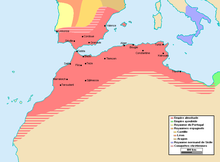
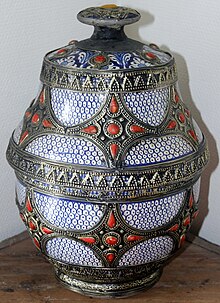







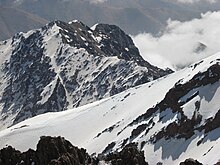


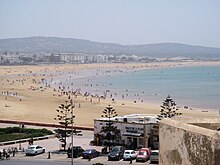

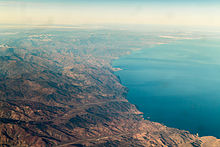



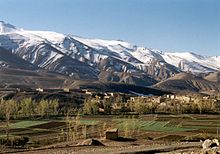

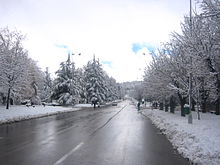
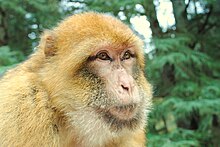
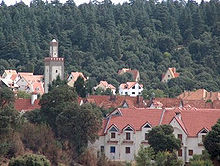


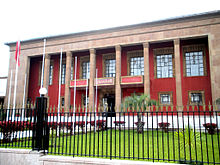









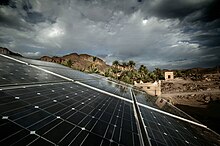


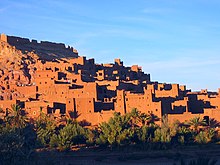
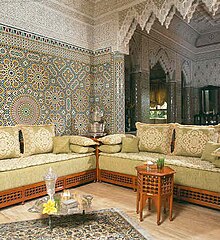





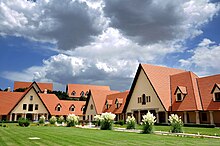

No comments:
Post a Comment